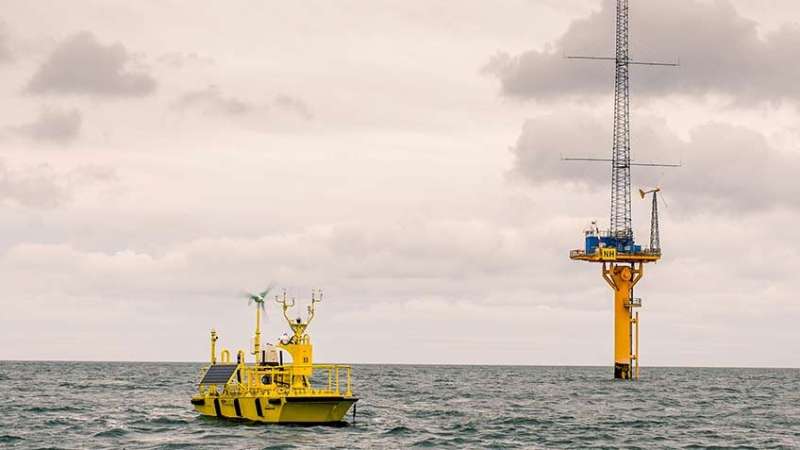Offshore wind data release propels wind prospecting

At first glance, today's wind resource assessors and mining prospectors of the past seem quite different. Look closer and you will find some striking similarities. Notably, a willingness to sift through volumes of information to dig up resource nuggets worth their weight in gold.
Unlike the past, however, today's wind resource prospectors share their findings with the world. Using state-of-the-art modeling tools and sophisticated resource assessment technologies, the Wind Resource Characterization team at the National Renewable Energy Laboratory (NREL) makes available new offshore wind data sets.
"Existing offshore wind data are largely outdated, lacking precise, real-world observations," said NREL researcher Mike Optis, who is leading efforts to update publicly available offshore wind data. "Our goal is to provide more accurate data sets to the public that can improve offshore wind plant site selection, design, and operational decisions."
Offshore Wind Data Evolution
In July 2020, NREL published an article about novel techniques and tools to produce offshore wind-speed data. Now those tools—such as numerical weather prediction and buoy-mounted lidars—have borne fruit.
The team has made data available for the outer continental shelf of California, the Mid-Atlantic, Hawaii, and the Pacific Northwest, with more on the way.
"Advancements in numerical weather prediction models supply us with more accurate estimates of wind resources," Optis said. "The combination of increasing observations from the field and our enhanced ensemble modeling technique improves our confidence in the accuracy of the data we collect and disseminate."
Like crowd wisdom, which holds that the shared thoughts of multiple people will produce a picture closer to the truth than what a single person could produce, ensemble modeling compiles many individual simulations to yield a spread of possible wind resource data sets. Researchers then run these individual simulations through a machine learning algorithm to produce an aggregate of responses. This results in a collective judgment closer to reality than what a single model could generate—preserving the good judgments while eliminating the idiosyncrasies of each data set.
The new offshore wind data sets span 20 years and will be combined with a data set covering the continental United States. Together they will replace the original WIND Toolkit that was based on 7-year time frames. Data sets with lengthy time intervals like this would not be possible without high-performance computers like NREL's Eagle, which can quickly process the exceedingly complex simulations necessary to create data sets that cover extended time periods. As a result, the extended time interval introduces less chance for outlier years—where wind speeds are drastically higher or lower—to tilt data averages, resulting in more accurate data sets.
How and Where To Access the New Data Sets
Several methods of accessing the new offshore wind data sets exist. Some wind prospectors might prefer a fully customizable approach to extracting offshore resource data—that is where the Resource eXtraction (REX) tool comes in.
Accessible through GitHub, REX provides a Python-based code library for the efficient and scalable extraction, manipulation, and computation with various renewable resource data sets, including the WIND Toolkit and the National Solar Resource Database. It helps analysts and developers extract new offshore wind data, while also allowing code modifications to time averaging, spatial ranges, and other methods of processing data.
Other users may elect to get the new data sets from NREL's Wind Prospector—a geospatial web application that visualizes wind resource data sets, while also serving as a data repository by making many of the data layers available for download. Wind Prospector gives users a simple point-and-click method to download data, which can aid wind developers, consultants, and researchers with their siting decisions and analysis.
There is also an API option to download the new offshore data sets, courtesy of NREL's Developer Network.
More Data Sets on the Horizon
While a small but diligent and nimble fleet of NREL researchers work to make new offshore wind resource data sets available, they soon hope to add these to an update of the original WIND Toolkit, which will include wind data for the continental United States, Hawaii, and Alaska. For this update, both continental and offshore data sets will be stitched together, laying the foundation of the WIND Toolkit Long-term Ensemble Dataset (WTK-LED).
"Combining offshore and onshore wind resource characterization efforts can form the basis for broader grid integration and wind energy capacity expansion," Optis said. "The combined data set could significantly boost the U.S. power system by linking continental wind resources with their coastal and offshore brethren, informing local community decisions on where to derive power."

















